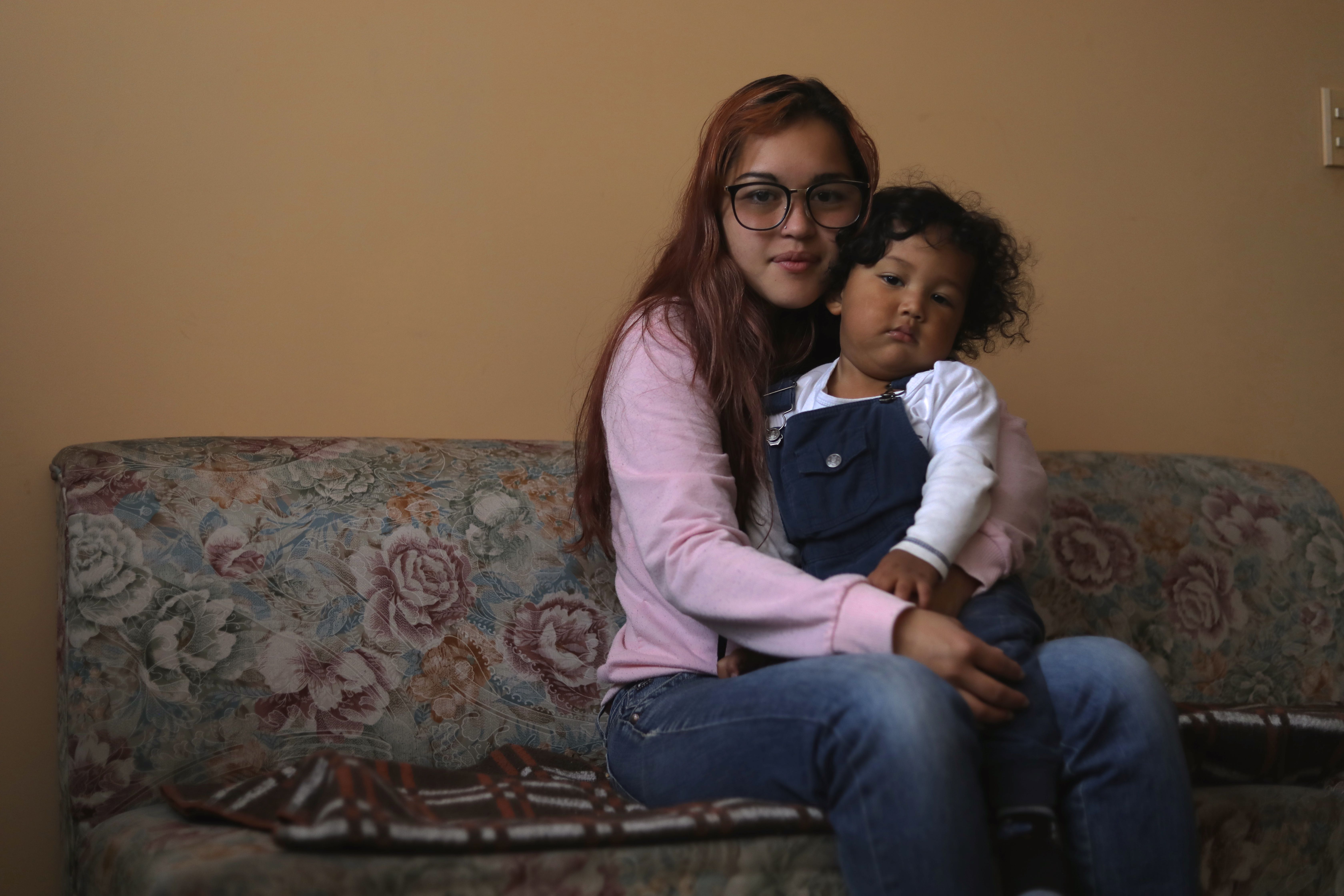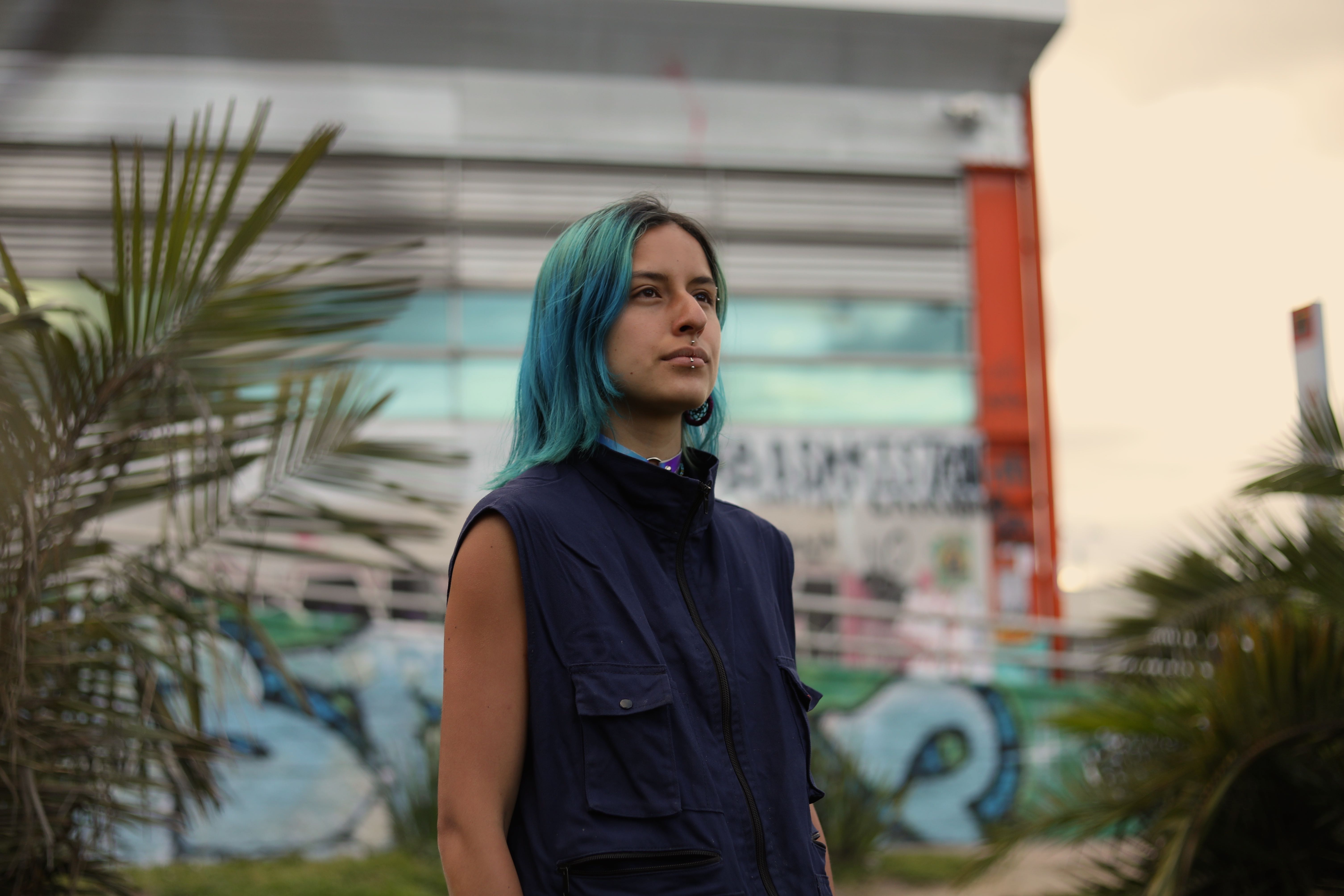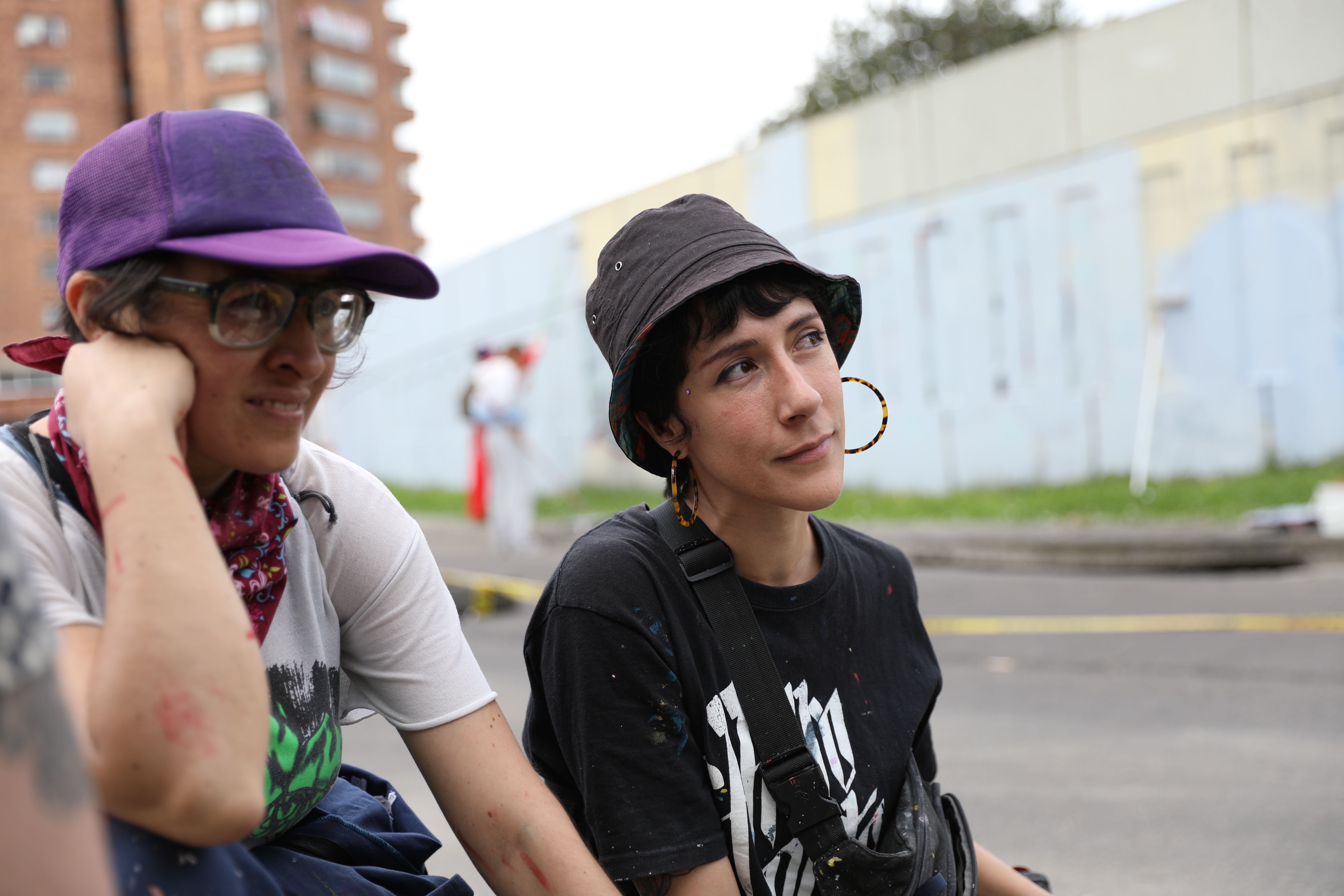Since April 28, thousands of people have spilled out onto the streets of Colombia, joining mass demonstrations that have ignited a national reckoning over deep-rooted social inequality.
Protests started over a tax reform that President Iván Duque claimed was crucial to closing the fiscal gap induced by the COVID-19 crisis, but that critics said would hurt those already reeling from the economic fallout.
Under enormous pressure, the president axed the bill and the finance minister that authored it resigned, yet these concessions have fallen short of quelling outrage more than six weeks after protests started.
On the streets, a wide cross-section of society, including Indigenous and Black protesters, unionists, and disenfranchised youth are marching peacefully, setting up road blockades and assembling town hall meetings to discuss and decide on the future of the country.
The aim is to create a movement that will outlast the protests.
Unsurprisingly, youth are at the forefront of the uprising, organizing stone-wielding protesters as a defensive barrier against militarized police but also encouraging droves of outraged youth to serve their community by hosting human rights workshops, soup kitchens, and cultural shows. The underlying aim of many is to create a movement that will outlast the protests, and spur structural transformations.
Along with improved healthcare, education and employment, people have called for immediate police reform. Ongoing outrage has intensified with reports of police violence, including the use of live ammunition and deadly force against protesters. At least 45 people have allegedly been killed by police during the first 33 days of protests, with many of the slain being under the age of 35.
Social disparities that fueled a decades-long guerrilla insurgency and that were expected to end with a 2016 peace deal have also been laid bare by the pandemic. Caught in a rare flicker of hope, empowered youth are seizing the moment to lay these injustices to rest.
Five young activists in the capital city of Bogotá spoke to Remezcla about the future of the protests, what motivates them to organize and where we go from here.

Camilo, 24, Volunteer first responder
A protester’s head cracked open by a stun grenade. An eye maimed by a tear gas canister. A protester’s nasal cavity was destroyed by a rubber bullet. These are some of the injuries a makeshift brigade of volunteer medics, made up of local men and women, attend to on a daily basis. When night falls in one impoverished neighborhood of Bogotá, clashes break out between heavily militarized police and young locals, armed with a wooden shield and a cement rock. Once one of those youths, Camilo now risks his life every night to save lives.
“Before I was in the medical brigade, I was a rioter like a lot of other kids,” he shares. “They do it because of their hate for the police, because of the police abuse they’ve experienced. In 2013, during the agrarian strike, I saw how the police attacked the people. These are the things that mark you and make you a revolutionary: to realize that even during peaceful protest, police attack us,” says Camilo, a volunteer first responder who withheld his last name out of security concerns, in reference to the police murders.
We need better opportunities for youth.
Poor youth in Colombia often face stigma from police and employers, Camilo adds. “The police take advantage of the fact that they have the weapons, that they have the power. They say that we are a herd of vagabonds, that we don’t want to do anything. But it’s not like that. There are many youths that have aspirations. The problem is that opportunities are scarce. Look at me, I’m 24 years old, I haven’t been able to study and it’s been difficult to find employment.”
“There are many companies that still hold on to old beliefs. They’ll discriminate against you for having gauges, for having tattoos, because of the way that you speak, because of the neighborhood you’re from. They stigmatize you because of the social class you’re part of… We need better work and educational opportunities. We need better opportunities for youth.”
Anonymous, 22, First line defender
The first stun grenade explosions of the night sound like the burst of bombs in the quiet working-class neighborhood of Kennedy in southwestern Bogotá. Almost every night here, riot police unleash a steady supply of stun grenades, tear gas, and rubber bullets at protesters called the “first line.” Young men and women huddle behind a line of makeshift shields, fashioned out of discarded plywood or oil drums. Behind them stands the second line, tasked with slowing down the advance of police with stones and proyectiles, and the third line, made up of protesters who hurl back sputtering tear gas canisters.
“It’s a manifestation of our desire to protect protesters,” the first line defender and university student, who wished to keep anonymous for security reasons, shares.
“They have armor, they have equipment, they have all the means to crush us,” he says. “We’re a voice of resistance, we show them that we won’t accept their repression.”
Many youth risk their lives in the front lines because they live under constant police abuse. “The people in these neighborhoods have a lot of hate for the police. They smoke a blunt in the park, the police arrive and the police snatches their money, robs their cell phone, and on top of that, beats them. You realize that they’re not fulfilling their constitutional mandate to protect the people,” they expand.
“The first line emerges from the discontent and unrest in the youth. From the lack of access to education, from the fact that our parents are in debt, that in our homes money stretches less. In my house, my parents pay rent and utilities and they say there’s only 50,000 pesos ($13) to last the rest of the month. I’m fine with eating eggs and rice or potatoes and rice everyday. It’s food. I’m not ungrateful. But this is my family, where both parents try to keep finances steady. What must other households be like where a single mother is trying to make ends meet?”

Maira Alejandra, 19, Activist against police violence
At the age of 19, Maira Alejandra is a mother and a widow. She’s also a well-respected anti-police brutality activist in her community in northern Bogotá, where a police officer allegedly killed her boyfriend, Jaider Fonseca, last September during protests against police violence. During the national strike, she’s seen history repeat itself, with some 45 protesters killed by police in less than a month. She hopes her experiences can be useful to the mourning families.
“It’s important for us that people who are experiencing what we have already experienced receive help from the victims themselves, so that they know what to do and so that they don’t let the state silence them in the midst of their pain,” says Maira Alejandra, who co-founded the Police Victims’ Bloc in the wake of Jaider’s death. During recent protests, protesters who throw stones or destroy private property are called vandals by the media and right-wing politicians. In Jaider’s case, Maira Alejandra said the media continued to smear his name months after he was killed.
We demand the cycle of violence to end.
“This is the moment for everyone to open their eyes and to understand that they don’t kill us because we are vandals. Police shoot because they say they are afraid. It’s the moment for people to understand that police and riot police respond to rocks with bullets and with stun grandes that end lives. Protesters don’t have a way to protect their lives. Yet, police attack them as if they were fighting guerrillas or the National Liberation Army… As victims, we demand the cycle of violence to end, no more blood, no more pain, no more disappearances, no more death. We ask for police reform and the dismantling of the riot police.”

Lorena, 23, Community organizer
Parallel to the chants and the mass marches, hundreds of people gather almost everyday at a cordoned-off bus station plaza in southwestern Bogotá, known as Portal de la Resistencia. It’s been claimed as a “humanitarian space,” cut off from law enforcement and opened up for live concerts, workshops and a community kitchen. “More than protests, we’re creating spaces for dialogue and discussion,” says Lorena, a communications officer at Portal de la Resistencia.
“By sharing this space, we’ve been able to see why people come, what our common needs are, and what we want to build. Beyond the issues that emerged during the strike like the tax reform, we see that all this surfaced because of the collective indignation and rage that was about to explode.”
Many times I don’t even know how to give order to so much anger, so much outrage.
“If we don’t organize ourselves, many times these things become very explosive. Many times I don’t even know how to give order to so much anger, so much outrage. By allowing ourselves a space to speak with others, we give ourselves the possibility to think of what we should do.”
Many youth in the neighborhood are hindered by financial reasons from attending college. Lorena, a film major in college, dropped out four years ago when her money dried up. She traveled for a bit and returned to find a cultural center and a feminist collective that changed her worldview. Finding people that cared for her and her community kept her coming back.
“From the perspective of the collectives and the democratic assemblies, we hope to keep up these spaces and not just until the strike ends,” she says. “We want people to feel that the strike was more than just protests, that it was an organic movement that allows for more struggles to emerge and for more spaces to open up where people can continue to transform their neighborhoods.

Diana, 31, Graffiti artist
One of the most emblematic protest points in the city is the Heroes Monument, an homage to the fallen soldiers from Colombia’s independence struggle. In mid-May, Diana, along with a crew of muralists and graffiti artists, covered the monument with a painted portrait of an Indigenous Nasa warrior. Days later, they blocked off a major road for hours, where they painted one of the most important pending questions of the mass protests: “Where are the disappeared?”
“Our responsibilities as communicators is to talk about what’s happening,” Diana says. “I do this to create awareness. I think art is a very powerful tool for communication and pedagogy.”
I dream of a country in which we’re not being killed.
During protests, people have found creative ways to make a statement. “We may not be armed like they are, but we have an aerosol, a paintbrush, a microphone, an instrument, a camera. All of us are helping out based on what we know and what we know how to do.”
“I dream of a country in which we’re not being killed, in which all the youth and all the people that live in the rural areas have access to healthcare, housing, education, employment. We need less arms, and more art and instruments and more spaces where people can be who they want to be and do what they love and want to do.”







